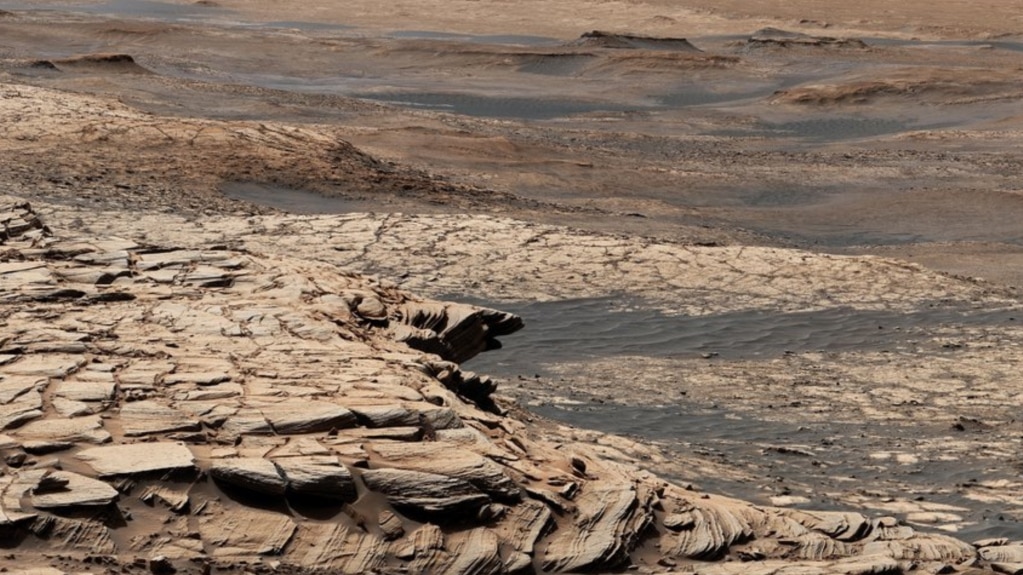Scientists are seeking to find out what is producing the slow release of methane gas on Mars.
Methane often results from biological processes. On Earth, most of the gas comes from living creatures. For this reason, the American space agency NASA has been investigating methane levels on Mars in a search for signs of current or past life. So far, no evidence has been found.
But a new study is providing fresh details about methane on Mars. NASA’s Curiosity explorer, or rover, has repeatedly measured methane levels on the Martian surface. The rover arrived on Mars in 2012 and has been exploring areas around Gale Crater. This area is believed to have contained a lake at one time and has also shown other evidence of flowing water in the past.
NASA says Gale Crater is the only place where methane has been discovered. Even a spacecraft sent to collect data on the Martian atmosphere has not identified the presence of methane. That spacecraft, the ExoMars Trace Gas Orbiter, is operated by the European Space Agency.
In addition to only being discovered, or detected, around Gale Crater, the observations of methane happen only at night, NASA researchers recently reported. Levels also go up and down during different seasons and at times, rise sharply for short periods.
The mysterious methane releases leave scientists considering “a lot of plot twists,” said Curiosity project leader Ashwin Vasavada. But a NASA research group recently proposed a possible explanation for how the gas behaves on Mars.
The researchers theorize that all detected methane could be trapped, or sealed, underneath hardened pieces of salt in Martian regolith. Regolith describes soil that contains rock and dust that sits on or below the surface.
The scientists say increases in temperature might explain the differences in gas release. During certain seasons or times of day warmer temperatures could weaken the seal on the methane, causing gas to be released.
NASA said the research was led by Alexander Pavlov, a planetary scientist at the agency’s Goddard Space Flight Center in Maryland. He said small amounts of methane could also be released when the regolith seal is broken by weight from above, for example, when the Curiosity rover drives over the area.
Pavlov said this theory could help explain why methane levels have only been discovered in the Gale Crater area. It is the only place on Mars where NASA’s Curiosity rover is currently active.
NASA has another rover working on Mars, Perseverance. But it has been exploring the Jezero Crater area on another part of the planet. Jezero Crater is also believed to have contained large water bodies in the distant past. But Perseverance is not equipped with a methane-detecting instrument.
Pavlov noted that the latest theory came from his memories of an unrelated experiment carried out in 2017. The experiment involved growing microorganisms in a simulated Martian environment that included frozen soil that contained salt.
During that experiment, researchers observed that the collection of soil on top formed an icy, salty crust. Changes in conditions caused the ice to melt, turning the solid material into a gas and leaving the salt behind.
Pavlov’s team tested five samples of frozen soil containing different kinds of salt material commonly found on Mars. A new set of Earth-based experiments was carried out in which the frozen material was exposed to different temperatures and air pressures inside an environment at Goddard that was designed to be like Mars.
The team was able to repeatedly copy the salt sealing process in Mars-like conditions during laboratory testing. The researchers said they plan to keep carrying out experiments under different conditions and using salt minerals to confirm their theory.
But the researchers noted that to carry out more detailed methane investigations, they will likely need a whole new generation of sensitive instruments. These would be designed to measure methane continuously from many places on Mars.
I’m Bryan Lynn

